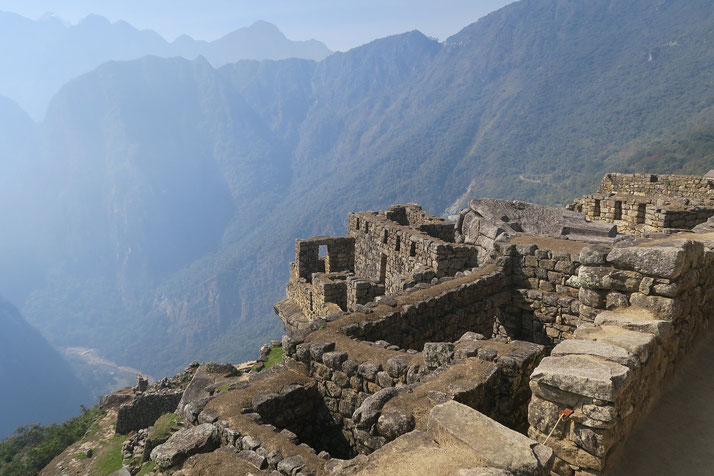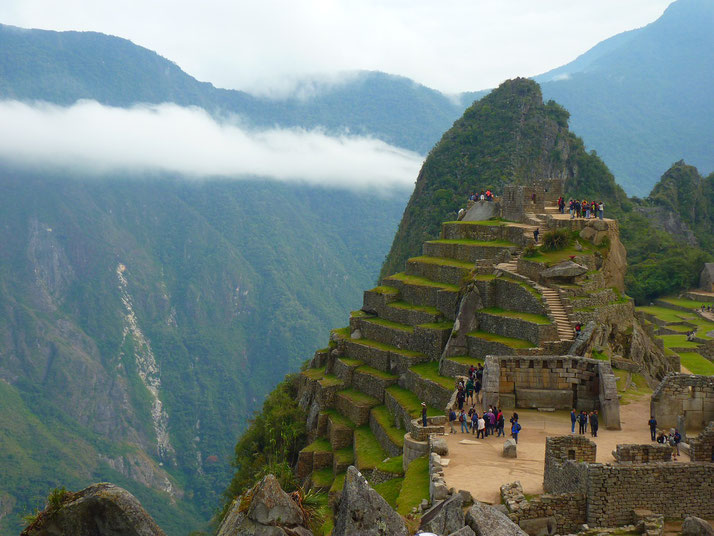Machu Picchu: The astonishing genius of Incan architecture, engineering, and spirituality

Machu Picchu, the architectural marvel etched into the high Andean mountains, has captivated the imaginations of historians, archaeologists, and tourists for over a century.
This fascinating relic of the Incan Empire, shrouded in clouds and mystery, is a testament to the extraordinary ingenuity and resilience of an ancient civilization.
Though discovered by the western world only in 1911 by the explorer Hiram Bingham, the "Old Mountain" in the Quechua language, has since revealed numerous secrets about Incan life, engineering prowess, and cultural sophistication.
But what made the Incas build such a monumental city in such an inaccessible location?
How did they accomplish this colossal task without the wheel, iron tools, or even a written language?
What was the purpose of this secluded city and why was it abandoned?
The imposing location of the city
Perched high in the Andes Mountains, Machu Picchu stands at an impressive altitude of nearly 2,500 meters above sea level.
Located in the Cusco Region of Peru, this awe-inspiring site is nestled between two imposing peaks, Machu Picchu and Huayna Picchu, from which it derives its name.
Overlooking the roaring Urubamba River below, the site affords breathtaking views of the surrounding lush, cloud-shrouded mountains, embodying the wild beauty of the high Andes.
The geographical context of Machu Picchu plays a vital role in understanding its remarkable construction.
The Incas, demonstrating immense mastery over their environment, carved this city out of the steep mountainous terrain, utilizing the natural contours of the landscape in their architecture.
The sheer location, high above the Sacred Valley and concealed by thick cloud cover and dense vegetation, would have provided the Incas with strategic defensive advantages, making the city nearly invisible from below.
Furthermore, the proximity to the equator is significant, with the Incas making use of the unique geographical location for astronomical observations.
It's no coincidence that important structures within the city align with the sun's position during solstices and equinoxes, revealing the sophisticated astronomical knowledge possessed by the Incas.
Yet, despite its inhospitable location and challenging topography, the city was self-sufficient, as evidenced by the extensive agricultural terraces.
These terraces, built into the mountainside, not only prevented soil erosion but also created a microclimate for growing crops like maize and potatoes, crucial for sustaining the city's population.
A brief history of Machu Picchu
Machu Picchu's history is as rich as the culture that created it, deeply entwined with the rise and fall of the remarkable Inca Empire.
Born from the highlands of Peru in the 13th century, the Inca Empire grew to become the largest empire in pre-Columbian America.
At its zenith, it stretched from modern-day Colombia in the north, all the way down to Chile and Argentina in the south.
In less than a century, the Incas developed a sophisticated society marked by advancements in engineering, agriculture, and astronomy, among other fields.
The construction of Machu Picchu represents the pinnacle of this rapid development, a monument to the extraordinary capacity of a civilization that was remarkably advanced for its time.
The exact date of Machu Picchu's construction remains a mystery, but most archaeologists agree that it was built around the mid-15th century, during the reign of the Inca ruler Pachacuti Inca Yupanqui.
Although no written records exist to explain the city's purpose, scholars believe that it likely served as a royal estate, designed to showcase Pachacuti's power and the grandeur of his empire.
Its remoteness, inaccessibility, and alignment with significant astronomical events suggest that Machu Picchu might have also been a sacred site, used for religious ceremonies and spiritual retreats.

By the time Spanish conquistadors arrived in Peru in the 16th century, Machu Picchu appears to have been abandoned, its existence unknown to the invaders.
The city remained undiscovered for centuries, its structures reclaimed by the surrounding vegetation.
The incredible engineering skills used in its construction
Machu Picchu is a marvel of ancient construction techniques and practical design.
The city was built using a method known as ashlar, where stones are cut to fit together without the use of mortar.
Despite the passage of centuries and the frequent earthquakes in the region, these stone structures have remained largely intact, an eloquent testimony to the Incas' superior masonry skills.
The precision with which these stones were cut and fitted together is so exceptional that even a thin knife blade can't be inserted between them.
The city's layout demonstrates a deep understanding of the natural environment and an impressive ability to adapt to the challenging topography.
The Incas constructed over 600 terraces on the mountainside to prevent soil erosion and create flat, arable land for agriculture.
This terracing technique turned steep slopes into productive farmland, ensuring the city's self-sufficiency and resilience.
Each terrace was layered with stones, sand, and topsoil to improve drainage and fertility.
Moreover, the Incas constructed an intricate network of water channels to supply fresh water from a natural spring to every corner of the city.
Starting from the Main Fountain, a series of 16 interconnected fountains, known as 'pacchas,' ran through the residential areas.
This advanced hydraulic system underlines the ingenious engineering abilities of the Incas.

How the ruins of Machu Picchu were found
The rediscovery of Machu Picchu in the early 20th century is a tale of adventure and serendipity, entwined with controversy.
While local communities had been aware of the ruins, it was not until the arrival of Hiram Bingham, an American historian from Yale University, that Machu Picchu garnered international attention.
On July 24, 1911, guided by a local farmer and his son, Bingham embarked on a journey up the steep slopes of the Andes.
There, hidden beneath the thick tropical overgrowth and shrouded by misty clouds, lay the forgotten city of Machu Picchu.
Bingham was not, in fact, looking for Machu Picchu, but rather the city of Vilcabamba, which he believed to be the last stronghold of the Incas during their resistance against Spanish conquest.
Despite this, the significance of his discovery was not lost on him, and he quickly undertook the task of documenting and studying the site.
In the years that followed, Bingham led a series of expeditions, funded by Yale University and the National Geographic Society, to excavate and restore the site.
During these expeditions, thousands of artifacts, including ceramics, textiles, and mummies, were removed and taken to Yale for further study.
Bingham's removal of these artifacts sparked controversy and a long-standing dispute between Yale University and the Peruvian government.
It was argued by Peru that these items were loaned, not given, to Yale, and they were part of the nation's cultural heritage.
After a century-long battle, the majority of the artifacts were eventually returned to Peru, marking a significant moment in the history of cultural repatriation.
The mystical elements of Machu Picchu's design
Machu Picchu's architectural and geographical features hint at its profound cultural and religious significance for the Inca civilization.
The city is thought to have served multiple functions: a royal retreat, an agricultural hub, an astronomical observatory, and a sacred pilgrimage site.
Each of these aspects speaks volumes about the social, political, and spiritual world of the Incas.
One of the central features of Machu Picchu's cultural and religious landscape is the Intihuatana stone, a ritual stone associated with the Inca's astronomical observations and religious ceremonies.
Intihuatana, translated as "the hitching post of the sun," was believed to hold the sun in its place along its annual path in the sky.
During the winter solstice, the Incas held ceremonies at the Intihuatana to "tie down" the sun to prevent it from disappearing altogether.
This highlights the importance of solar worship in Inca religion and their keen understanding of celestial cycles.
In addition to its astronomical significance, Machu Picchu also hosts numerous temples and sacred spaces that speak to its religious importance.
Prominent among them are the Temple of the Sun and the Temple of the Three Windows, both of which have notable astronomical alignments.
The Temple of the Sun, an elliptical structure, houses a significant ceremonial stone, believed to be used for important rituals.
During the summer solstice, sunlight enters a window of this temple and illuminates the ceremonial stone.
The Temple of the Three Windows opens onto the main plaza and is associated with the Inca creation myth, signifying the three stages of existence: the underworld, the earthly realm, and the heavens.

The presence of numerous huacas (sacred stones or locations) within the city also underlines its religious significance.
These huacas, which can be naturally occurring rock formations or purposefully built structures, were believed to be dwelling places of gods or ancestral spirits and were often used as altars for ceremonies and offerings.
Machu Picchu's cultural and religious significance extends beyond the time of the Incas.
Today, it serves as a symbol of Indigenous persistence and resilience in the face of colonialism.
As a UNESCO World Heritage Site and one of the New Seven Wonders of the World, Machu Picchu continues to be a place of reverence and wonder, inspiring millions of visitors each year with its profound spiritual and cultural resonance.
What do you need help with?
Download ready-to-use digital learning resources
Copyright © History Skills 2014-2024.
Contact via email
With the exception of links to external sites, some historical sources and extracts from specific publications, all content on this website is copyrighted by History Skills. This content may not be copied, republished or redistributed without written permission from the website creator. Please use the Contact page to obtain relevant permission.





